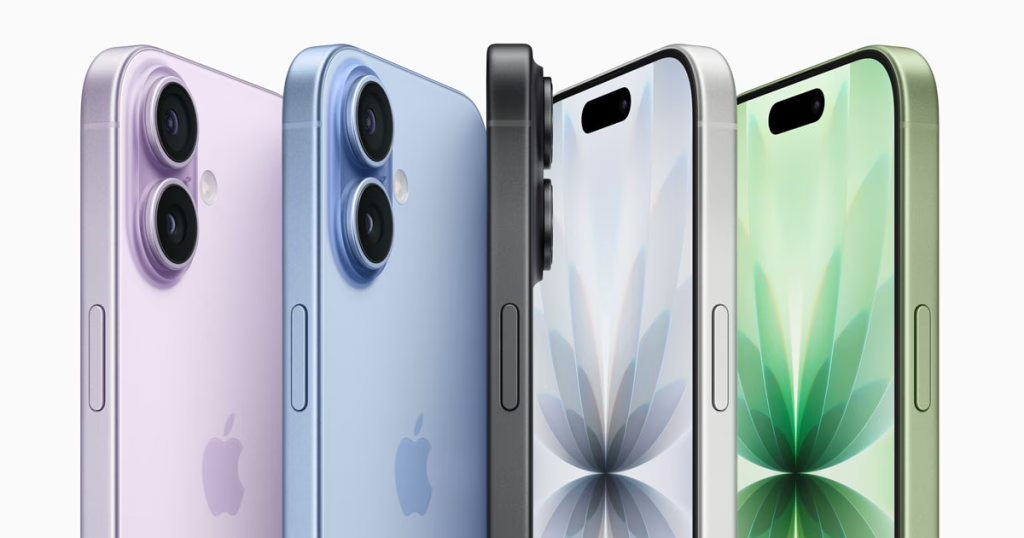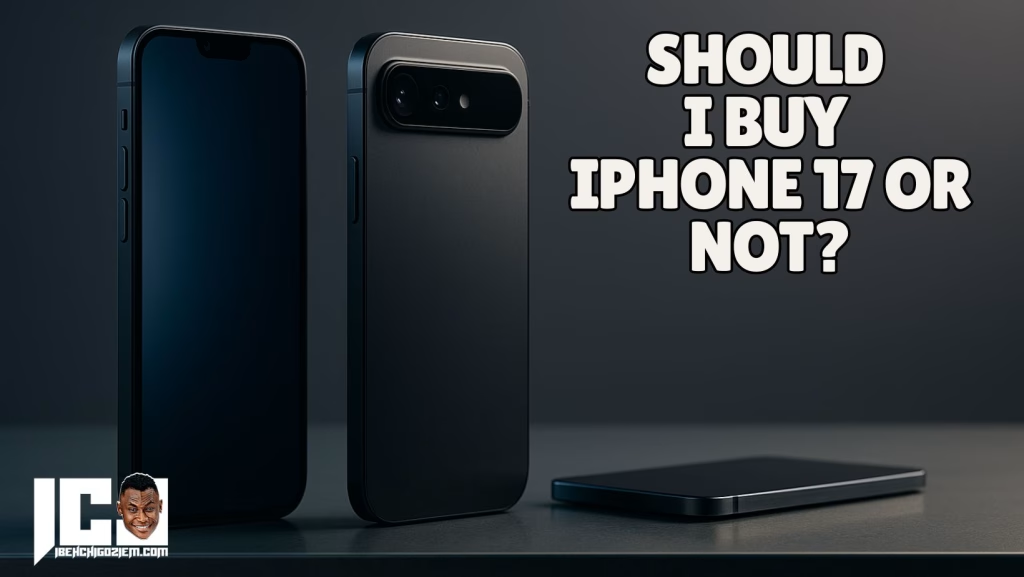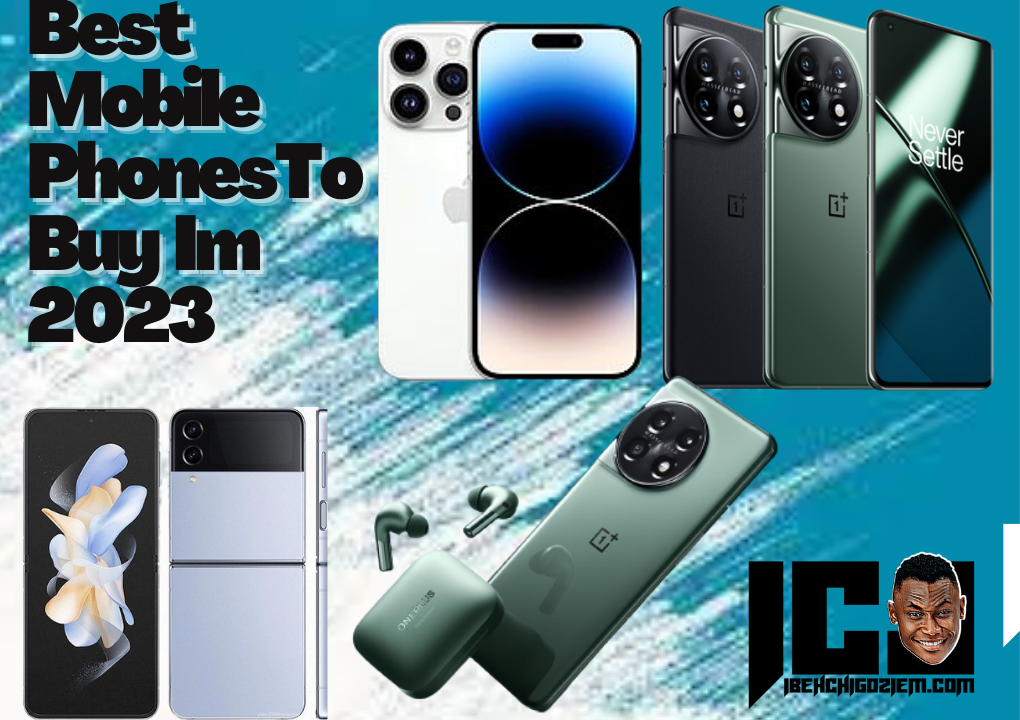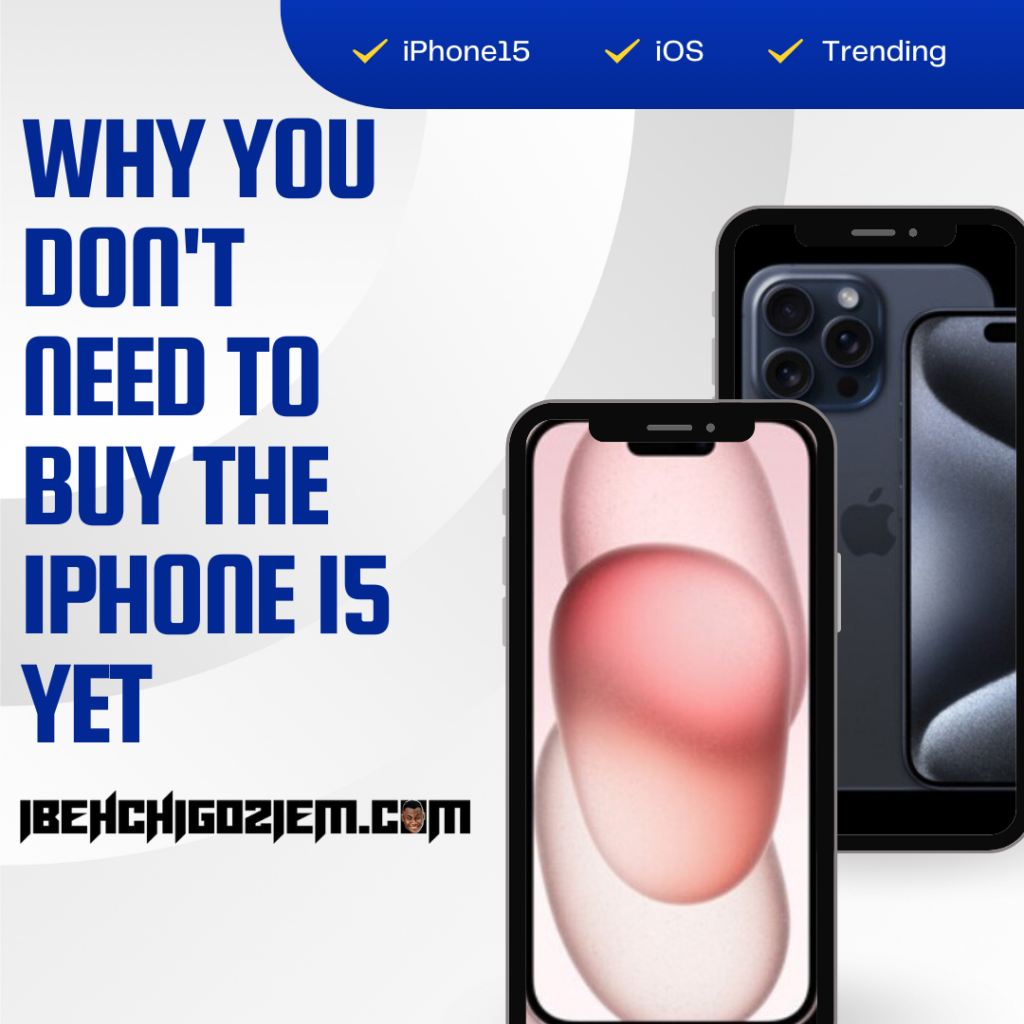Should I Buy iPhone 17 or Not? Pros & Cons (2025 Review)
The iPhone 17 lineup is finally here—three distinct takes on “flagship” that look similar at a glance but feel very different in the hand and in daily life. The mainstream iPhone 17 brings long-overdue ProMotion smoothness and a genuinely smarter selfie system; the 17 Pro/Pro Max double down on sustained speed, battery, and serious camera tools; and the ultra-thin iPhone Air flexes design above all else. If you’re torn between real-world gains (display, battery, cameras) and headline features (aluminum thermals, 48MP telephoto, featherweight titanium), this no-fluff guide breaks down what actually matters so you can answer the only question that counts: Should you buy iPhone 17—or wait, switch, or go Pro?
ALSO, READ Best Landing Page Builder 2025: Unbounce vs Leadpages vs Carrd
Models covered: iPhone 17, iPhone 17 Pro/Pro Max, iPhone Air

- Buy iPhone 17 if you want the mainstream “sweet spot” this year: it finally gets ProMotion (1–120Hz), a bigger/brighter display (up to 3000 nits), and a clever new front camera that shoots landscape selfies without rotating the phone. Storage now starts at 256GB.
- Buy iPhone 17 Pro / Pro Max if you care about cameras, sustained performance and battery. Apple rebuilt it with an aluminum unibody + vapor chamber for cooler, faster sustained workloads, added a 48MP 4× telephoto (with a 56% larger sensor than last gen), ProRes RAW and genlock for creators, and the longest iPhone battery claim yet (up to 39 hours video playback on eSIM-only units). Colors: Cosmic Orange, Deep Blue, Silver.
- Skip iPhone Air unless thinness is your #1 priority. It’s stunningly thin (5.6mm) and light with A19 Pro, but it’s eSIM-only globally, no mmWave 5G, fewer cameras, and lower wireless charging ceiling than the other 17s. Apple even launched a MagSafe battery specifically for it—a clue about endurance.
If that’s enough, you’re good. If you want a buyer’s guide that actually weighs the trade-offs in plain English, let’s dive in.
The 2025 iPhone Lineup, in Human Terms
Apple’s September event brought three phone tracks:
- iPhone 17 — the “mainstream” iPhone is finally feeling premium
- iPhone 17 Pro / Pro Max — rebuilt for sustained speed, optics, and battery
- iPhone Air — drop-dead thin, but with meaningful compromises
Below I’ll translate the launch into real-world wins and gotchas, blending Apple’s official specs with first-look impressions (including MKBHD’s hands-on summary you supplied) so you can decide you should buy iPhone 17 or not—and if yes, which one.
What’s Actually New (and Why It Matters)
1) ProMotion for Everyone (finally)
All iPhone 17 models get Apple’s adaptive 1–120Hz ProMotion. Translation: silky scrolling, smoother gaming/UI, and lower power draw when the screen idles at 1Hz. On iPhone 17, that’s huge—this is the first time a “base” iPhone isn’t gated to 60Hz. Pair it with 3000-nit peak outdoor brightness, and you can read maps or messages under brutal sun.
Why you care: Once you live at 120Hz, 60Hz feels laggy. This is a genuine quality-of-life upgrade for non-Pro buyers.
2) The new Center Stage Selfie System (now on phones)
Apple introduced a larger, square front sensor that can shoot portrait or landscape while you hold the phone vertically, outputting up to 18MP selfies. For group shots, the camera can automatically widen/rotate to include everyone. It also enables ultra-stabilised 4K HDR and Dual Capture (front + rear simultaneously).
Why you care: landscape selfies no longer force that awkward, off-axis lens angle, and creators get rock-solid vlogging with simultaneous A-/B-roll.
3) Performance & Cooling: small bursts vs. long hauls
- iPhone 17 Pro/Max moves to an aluminum unibody + laser-welded vapor chamber, aiming at up to 40% better sustained performance vs last gen for long renders and extended gaming. Apple also rearranged internals (that new rear “plateau” bar) to fit a larger battery.
- iPhone 17 gets A19 with bigger efficiency gains and Apple’s new N1 wireless chip (Wi-Fi 7/Bluetooth 6/Thread).
- The iPhone Air runs A19 Pro too (minus one GPU core in some configurations, according to hands-on tests), but its ultra-thin titanium body doesn’t have room for a vapour chamber. Expect great burst speed but earlier throttling in marathon tasks. It’s the trade for that 5.6mm silhouette.
Why you care: if you edit, game, or shoot long takes, Pro is built to stay fast. If your use is everyday/social, 17 and Air feel instantly snappy—but Air may warm up sooner under sustained load.
4) Cameras: resolution vs. reach
- 17 Pro/Max: a new 48MP 4× telephoto with a 56% larger sensor than last year’s 5× (12MP) unit. Bigger sensor + higher resolution = cleaner crops and more usable zoom range, alongside the 8× optical-quality option Apple advertises across focal lengths. ProRes RAW and genlock arrive for serious shooters.
- 17 (base): all rear sensors are 48MP now (Main + Ultra Wide), with 24MP default output and richer macro/wide detail.
- Air: a single 48MP Fusion main (optical-quality 2× crop), the fancy front camera, and the thin-first design. Great for casual shooters; not a multi-lens toolbox.
Why you care: photographers/videographers should pick Pro without thinking. Casual shooters can be happy on 17. Air is fine—just know what you’re giving up.
5) Battery & Charging: new ceilings (and a notable floor)
- Pro/Max: Apple quotes up to 39 hours of video playback (on eSIM-only configs where SIM tray space goes to battery). Real-world numbers will vary, but the architecture genuinely targets sustained efficiency.
- 17 & 17 Pro: Qi2.2 wireless now up to 25W, matching upgraded MagSafe speeds.
- Air: limited to 20W wireless on MagSafe/Qi2.2, and Apple launched a thin MagSafe battery accessory for it (a hint). If you’re battery-anxious, that combo exists for a reason.
Why you care: road warriors = Pro Max. Everyday users = 17 / 17 Pro are solid. Air needs more planning (or that add-on battery).
Quick Spec Snapshot
Note: Specs summarized for decision-making. For full official pages, see Apple’s newsroom announcements.
| Feature | iPhone 17 | iPhone 17 Pro / Pro Max | iPhone Air |
|---|---|---|---|
| Display | 6.3″ Super Retina XDR | 6.3″ / 6.9″ Super Retina XDR | 6.5″ Super Retina XDR |
| Refresh / Brightness | 1–120Hz ProMotion, 3000 nits outdoor | 1–120Hz ProMotion, 3000 nits | 1–120Hz ProMotion, 3000 nits |
| Chip | A19 + N1 | A19 Pro + N1 | A19 Pro + N1 + C1X |
| Build | Contoured design, Ceramic Shield 2 front | Aluminum unibody + vapor chamber, Ceramic Shield 2 front/back | 5.6mm titanium, Ceramic Shield 2 front + Ceramic Shield back |
| Rear Cameras | 48MP Main + 48MP Ultra Wide | 48MP Main + 48MP Ultra Wide + 48MP 4× Telephoto | 48MP Main (2× optical-quality crop) |
| Front Camera | Center Stage (up to 18MP; portrait/landscape vertical hold) | Center Stage (up to 18MP; pro video features) | Center Stage (up to 18MP) |
| Wireless | Wi-Fi 7, Bluetooth 6, Thread | Wi-Fi 7, BT 6, Thread | Wi-Fi 7, BT 6, Thread |
| Wireless Charging | Qi2.2 up to 25W, MagSafe up to 25W | Qi2.2 up to 25W, MagSafe up to 25W | Qi2.2 up to 20W, MagSafe up to 20W |
| SIM | Physical/eSIM options (varies by region) | Physical/eSIM; some eSIM-only variants with larger battery | eSIM-only worldwide, no mmWave |
| Storage (base) | 256GB | 256GB | 256GB |
| Headliners | ProMotion on base, bigger display, 48MP Ultra Wide | Cooler/faster long-haul, new 48MP 4× tele, ProRes RAW, genlock, colorway: Cosmic Orange, Deep Blue, Silver | Paper-thin design, lightest feel; add-on MagSafe battery available |
ALSO, READ Wix vs Weebly 2025: Which Builder Wins on Price & Features?
Pros and Cons—By Model
iPhone 17 (the “default” pick)
Pros
- 120Hz ProMotion—no more 60Hz tax on base models.
- 3000-nit peak outdoor brightness = elite legibility.
- Center Stage front camera solves landscape selfies; 4K HDR stabilization helps creators.
- 48MP Main + 48MP Ultra Wide with better macro and 24MP default detail.
- 256GB base storage (finally).
- Qi2.2 25W wireless charging parity with MagSafe.
Cons
- No telephoto lens; “2×” is a crop (good, but not Pro-good).
- Not built for long sustained loads like the Pro’s vapor-chamber design.
Buy if: you want a balanced flagship that finally feels premium without Pro pricing.
iPhone 17 Pro / Pro Max (the power-user and creator choice)
Pros
- Aluminum unibody + vapor chamber = up to 40% better sustained performance than last gen; less heat under load.
- 48MP 4× Telephoto with 56% larger sensor; more usable zoom range and cleaner crops.
- ProRes RAW, Log 2, genlock—serious workflows now native to iPhone.
- Best battery claims yet (up to 39h video playback on eSIM-only configs).
- Colors: Cosmic Orange, Deep Blue, Silver—bold palette.
Cons
- No darker “black” option; if you want stealth, you’ll live in cases/skins.
- Heavier than Air; pricier than base 17.
Buy if: you shoot a lot, game a lot, or you just want maximum headroom and battery.
iPhone Air (the design flex)
Pros
- 5.6mm thin, featherlight—legit jaw-dropper on first pick-up.
- A19 Pro performance for regular use; same Center Stage front camera.
- Titanium build with Ceramic Shield front and back.
Cons
- eSIM-only worldwide, no mmWave 5G; travel and carrier edge cases apply.
- No vapor chamber; expect earlier thermal throttling under long heavy loads.
- Single rear camera; fewer focal lengths than 17 Pro/Max.
- 20W wireless ceiling (vs. 25W on 17/17 Pro); Apple sells a MagSafe battery just for it.
Buy if: you value thin & light above all else and mostly do everyday stuff.
Which iPhone 17 Should You Buy?
Choose iPhone 17 if you:
- Want the best value in the lineup this year
- Care about display smoothness and outdoor visibility
- Shoot lots of front-camera content or group selfies
- Don’t need telephoto or pro video codecs
Choose iPhone 17 Pro / Pro Max if you:
- Record long 4K footage, game hard, or edit on device
- Want the best iPhone camera trio (including a serious tele)
- Crave maximum battery runway
- Need ProRes RAW, genlock, Log profiles, etc.
Choose iPhone Air if you:
- Live for thinness/minimal pocket feel
- Don’t mind shorter battery and fewer cameras
- Are fine with eSIM-only and no mmWave
- Accept that sustained workloads will favor the Pro
Real-World Scenarios
- Vlogger/Creator: 17 Pro makes life simple: Center Stage front cam + ProRes RAW + genlock for multi-cam sync, plus a cooler chassis for long takes. The base 17 is capable, but Pro’s headroom pays off fast.
- Mobile Gamer: Pro/Pro Max all day—vapor chamber + A19 Pro sustain frames and keep temps friendlier over time.
- Traveler/Business: Base 17 or Pro. Air’s eSIM-only is okay for many regions, but if you bounce between carriers/countries or need mmWave, check your network realities before picking Air.
- Battery Worrier: Pro Max. If you love the Air look, budget the MagSafe battery add-on.
- Budget-Minded Upgrader: iPhone 17 hits the value/performance bullseye—120Hz + 256GB at the entry price.
Pricing & Availability (at a glance)
- iPhone 17: from $799, 256/512GB; pre-orders Sept 12, available Sept 19.
- iPhone 17 Pro / Pro Max: from $1,099/$1,199; same dates; colors: Deep Blue, Cosmic Orange, Silver.
- iPhone Air: from $999 (256GB; 512GB/1TB available); pre-order Sept 12, on sale Sept 19.
(Regional pricing varies; check Apple for your locale.)
Beyond Phones: AirPods Pro 3 and Watches (Quick Take)
- AirPods Pro 3: 2× better ANC than last gen, IP57, heart-rate tracking, $249—a surprisingly meaningful update. Apple
- Apple Watch Series 11: first cellular 5G support and possible hypertension detection; Ultra 3 gets thinner bezels, LTPO3, and longer battery. If you’re in the ecosystem, these are solid iterative gains.
Verdict: Should You Buy iPhone 17?
**Yes—**but which 17 depends on you:
- Most people: iPhone 17 is the right call. ProMotion at last, the brighter display, and that thoughtful selfie system fix the everyday stuff that actually affects how your phone feels.
- Creators, gamers, battery hawks: iPhone 17 Pro/Pro Max. The new thermals, battery claims, 48MP tele, and pro video stack make it the most compelling Pro jump in years.
- Design-first minimalists: iPhone Air will make your heart flutter—but buy it with eyes open: eSIM-only, no mmWave, fewer cameras, and conservative wireless speeds. It’s a beautiful first-gen swing that previews a future, but it’s not the rational pick for most today.
FAQs
Does iPhone 17 finally have 120Hz?
Yes. All iPhone 17 models—including the base 17—now have 1–120Hz ProMotion.
What are iPhone 17 Pro colors?
Deep Blue, Cosmic Orange, Silver.
Is the new selfie camera actually better, or just a gimmick?
It’s genuinely useful: a square front sensor outputs up to 18MP and lets you capture portrait or landscape while holding the phone vertically; it can also auto-adjust for group selfies.
How big is the Pro’s camera upgrade, really?
The 48MP 4× tele uses a 56% larger sensor than last year’s 5× tele, enabling cleaner zoom crops and better detail across lighting conditions.
Is iPhone Air worth it?
Only if thinness/lightness is your top priority. It’s eSIM-only, no mmWave, has a single rear camera, and slower wireless charging than other 17s. Great feel, but compromises.
Do the new 17s charge faster wirelessly?
iPhone 17 and 17 Pro support Qi2.2 up to 25W (matching upgraded MagSafe). iPhone Air is capped at 20W.
Source Notes & Attributions
- iPhone 17 (base): ProMotion (1–120Hz), 3000-nit outdoor brightness, new Center Stage front camera, 48MP Main + 48MP Ultra Wide, 256GB base. Apple
- iPhone 17 Pro/Max: aluminum unibody + vapor chamber, up to 40% better sustained performance, 48MP 4× tele with 56% larger sensor, ProRes RAW/genlock, up to 39h video playback, Deep Blue/Cosmic Orange/Silver colors. Apple
- iPhone Air: 5.6mm titanium, Center Stage, 48MP Main, eSIM-only worldwide, no mmWave 5G, lower wireless charging cap, Apple’s dedicated MagSafe battery accessory.
- Qi2.2 25W for 17/17 Pro; Air 20W cap. MacRumors
- AirPods Pro 3: 2× ANC, IP57, heart-rate, $249. Apple
- Watches: Series 11 (5G; hypertension detection in testing), Ultra 3 (thinner bezels, LTPO3, longer battery).
Final Recommendation
- If you’re upgrading from anything older than a 14: iPhone 17 is a massive feel upgrade (120Hz, brightness, new selfie system).
- If your phone is your camera and your console: iPhone 17 Pro/Pro Max.
- If you chase the thinnest possible hardware: iPhone Air—but understand the trade-offs and consider budgeting for the Air MagSafe battery.
When you strip the hype, the Pro models are the most defensible buys, iPhone 17 is the year’s best mainstream value, and Air is a gorgeous niche that may hint at the future—but isn’t the best all-round choice today.


